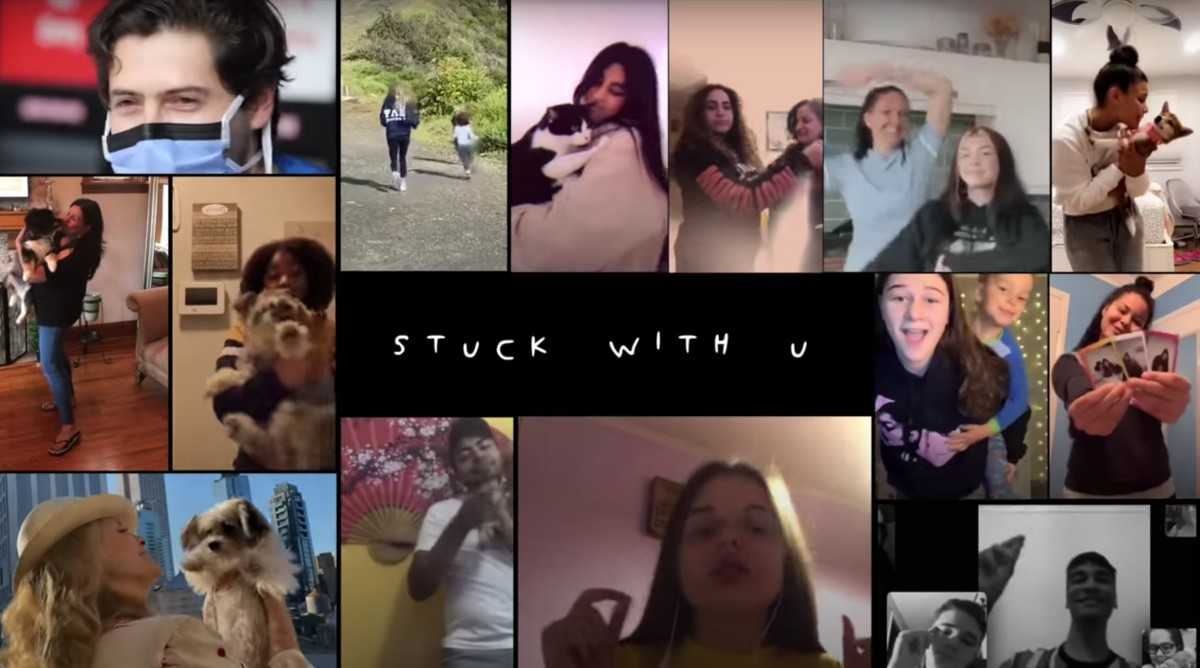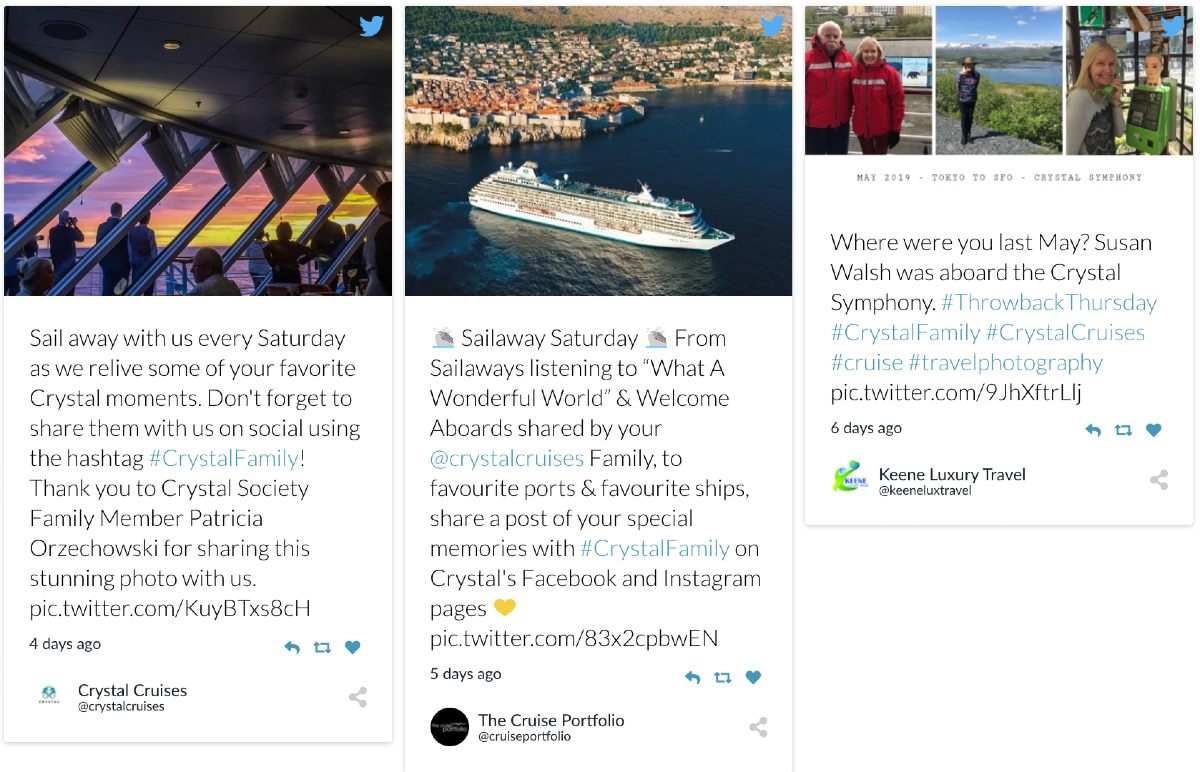Post-COVID, few industries will be the same. The world has drastically transformed, pushing brands to rewrite the marketing playbook with user-generated content (UGC) – turning to the voices of real people to help advocate, sell, and educate on their behalf.
According to a study conducted by Barometer, social media is on a rise, reporting “25,000 consumers across 30 markets showed engagement increasing 61% over normal usage rates. Messaging across Facebook, Instagram, and WhatsApp has increased 50% in countries hardest hit by the [COVID-19 pandemic]. Twitter is seeing 23% more daily users [in 2020 compared to 2019].”
Mass media production has been on hold for several months – prompting users to rely on virtual communities for information and entertainment. In some ways, the global pandemic has brought people closer together – even if digitally. Millions of posts are created every day by people all over the world – prompting marketing teams to strongly consider UGC in their strategies. In fact, 93% of customers believe user-generated content is very helpful when making a purchasing decision.
User-generated content offers many benefits for brands and marketers – trust-building, cost-advantages, and time optimization are just the beginning. If social media and UGC weren’t taking over the world before COVID-19, they sure have now. Better yet – they are actively shaping the future of marketing.
Trust and Authenticity
Consumers – especially millennials and Gen Z – are less likely to rely on advertisements and instead, hone their attention to service and product reviews. With UGC, marketing professionals can take a new approach and leverage the voice of consumers to connect more authentically.
With the click of a button, consumers can rapidly identify if a product or service is deemed reliable by other people. There is a strong desire for social acceptance among various in-groups, thus placing value on the opinions of others – an opportunity to enhance brand loyalty and trustworthiness with UGC.
Most people dislike being the first to try or buy new things. Even going “back to normal,” venturing out into the world, to restaurants, to schools, to businesses, to begin traveling and flying again, and staying at hotels can be considered new. Consumers are increasingly looking to UGC indicators to validate trust and safety – with 92% of surveyed consumers reporting they trust recommendations from other people, including strangers.
[bctt tweet=” Consumers are increasingly looking to UGC indicators to validate trust and safety. ” username=”thefutureofmktg”]
Marketers can leverage the voice of consumers who align themselves with the brand’s beliefs and values by highlighting user-generated content in ads, on web pages, and other marketing touchpoints. A vicarious perspective appeals to users due to the phenomenon of looking to others and thinking, “if other people are doing it, then so should I.”
A brand that showcases images and videos made by the average consumer allows its audience to relate and see the company isn’t trying to hide who they really are – reinforcing the brand image and increasing affinity.
Business impact and ROI
UGC typically performs more effectively than branded content and impacts ROI tremendously when used across multiple touchpoints, as it promotes social proof and builds consumer trust. A study by McKinsey shares, “Traditional marketing remains important, but the change in the way consumers make decisions means that marketers must move aggressively beyond purely push-style communication and learn to influence consumer-driven touch points, such as word-of-mouth and Internet information sites.”
Personalized marketing builds customer empathy. By understanding consumer attitudes, shopping behaviors, and needs – brands can deliver more effective and relevant messaging. With UGC, marketers can create personalized content and target consumers across various channels, including websites, social media, ads, digital signage, events, print, and more.
Companies that effectively leverage UGC across multiple touchpoints will see a direct and positive impact on brand loyalty – and their bottom line. Increases in conversion rates, average order values, time on site, engagement rates, shorter payback periods and reduced customer acquisition costs are a few of the most common ways that companies benefit from UGC.
One clear example of this is illustrated through time on-site; the longer visitors stay on a website, the more likely they will convert into paying customers. With UGC, websites can experience a 90% increase in time spent onsite, 20% increase in return visitors, and a 29% conversion rate. Additionally, UGC drives a 73% increase in email click-through-rates.
Loews Hotels worked with TINT to become one of the first hotels to incorporate UGC in its marketing strategies – specifically by using ‘guest-generated content.’ Loews launched an award-winning campaign, #TravelForReal, to collect and scale UGC that was repurposed in the company’s magazines, ad campaigns, and booking pages. The “models” used for these ads were Loews guests – giving their campaigns and brand a more ‘human’ element that consumers respond strongly to.
By incorporating UGC across multiple channels, Loews Hotels experienced:
-
62% increase in social engagement
-
85% time spent on bookings pages
-
4x increase in revenue from brand-site bookings
-
75% approval rate through TINT Content Rights
“The secret behind the powerful #TravelForReal campaign and Loews’ marketing success isn’t simply due to their ability to scale content, but to use content that celebrates their guests and creates an emotional attachment to the brand. They showcase guests on keycard inserts and magazine ads, highlighting all the wonderful experiences they have with the brand.”
Cost-effective production
Budgets are being closely watched. It was only a few weeks ago that people took pay cuts or worse – suddenly found themselves unemployed. The financial crisis will continue to impact purchasing patterns while many are focused on essential investments and expanding emergency savings. So, what does this mean for brands and marketing professionals?
With user-generated content, leading brands are saving money by not having to produce extensive amounts of content themselves. Sometimes, brands don’t have the resources or ability to produce their own content, turning instead to user-generated content to develop campaigns. Consider the #VogueChallenge, for example – where users are recreating their own Vogue images and campaigns to showcase their talents across social media. An opportunity for the magazine to partner with talented creators to save costs.
Ariana Grande and Justin Bieber also leveraged UGC when they announced their song collaboration and asked fans and celebrities to submit videos dancing to the beat of their new single in the TikTok #StuckWithUChallenge. The stars then produced their music video, ‘Stuck With U’ with content provided by their fans – saving significant production costs. To put these cost-savings into perspective, Ariana Grande’s song, ‘7 Rings,’ is estimated to have cost over $16,305,939 to produce.
If saving money isn’t all that compelling, consider another angle – “in 2017, 38 billion dollars was spent on digital ads, but a whopping 91% of it was viewed for less than a minute.” Return on investment implications can shift the way brands use smart marketing strategies to recover and offset ad production costs. Not only is UGC cost-effective, but with creative generations on the rise, brands should expect to see more captivating content and higher engagement levels across most – if not all – touchpoints.
Time-saving
Traditional campaigns and creative content can be very time-consuming. The sheer amount of preparation and planning that goes into typical projects can take months and involve an entire staff. Start with a vision, expand into an idea, create a storyboard, cast the talent, book the locations, coordinate with the camera crew, shoot scenes, wait for post-production, provide revisions and edits, get final assets delivered – and that is before any marketing takes place.
With UGC, teams can eliminate nearly all of those steps – saving time and money – and immediately jump to choosing the best visual creative that aligns with the vision for the project or campaign.
Equal representation is now more important than ever. Given that UGC is created by ‘regular people,’ brands have the ability to sort through a diverse array of content to highlight people of all shapes, sizes, backgrounds, and walks of life.
Brands need affinity and relatable content – people using your product, basking on your beach, eating your food. Therefore, diversity also becomes a major benefit of UGC.
Connection
Trust is crucial for consumers, as many choose to disregard brands they don’t relate to or do not offer a genuine connection. Creating engaging experiences is a talent that takes understanding consumer motivations to exceed expectations and drive participation.
Engaging and participating in relevant conversations that your target audience is interested in is necessary to propel you in front of more people like them as people are more likely to engage when they feel connected to a group or greater purpose.
“Brands that recognize and continue to engage consumers in the midst of growing restlessness will be better positioned to capitalize on the burst in demand when recovery sets in,” shares Carolyn Corda, CMO of Adara.
Create content and experiences worth sharing – and do it consistently. Speak to your audience, engage with them, make an effort to understand them – because word-of-mouth is the most powerful form of marketing.
During the pandemic – an unforeseen event that catalyzed remote connection – Crystal Cruises took their users on a weekly virtual voyage aboard one of their luxury vessels with various continuously updated themed experiences. The company leverages social media by inviting users to explore a wide array of “live streaming events, virtual conversations, podcasts, #CrystalFamily hashtag, and more.”
Despite challenges, Crystal Cruises found various ways to engage their most loyal customers from a distance – giving a sense of adventure from the comfort of home.
Marketers have to adjust in the post-COVID world while consumers find a new normal. And with the help of UGC, content creation and curation has taken a whole new meaning. Brands that understand and leverage the power of UGC now will gain a competitive advantage and reap its long-term rewards.
UGC for eCommerce
For some eCommerce teams, closing sales involves more than a demo and phone call with prospective customers; other times the eCommerce customer journey does not involve human interaction at all. Marketing and sales teams need to align to deliver and share sufficient and valuable information to make customers feel confident about their purchase and engaging with your brand – and this can be accomplished by providing social proof across multiple touchpoints.
When approached strategically, UGC can help potential customers overcome their objections and feel more at ease about buying your product. Consumers visiting your website and social media platforms require social proof, or testimonials, to understand the level of value you are providing. The key to converting and appealing to prospects is demonstrating your previous customers agree that your products are worth the purchase.
In a study conducted by Forrester, an eCommerce entity with over $800 million in annual revenue and over 80 stores conducted A/B tests pitting UGC against branded content for social campaigns. Results found that ads featuring UGC earned 15% more orders and also reduced the cost of acquisition by 11% – valuing content performance at over $2.5 million in risk-adjusted value over three years.
The study also showed an increased conversion rate of 257%, or 3.6x, in the eCommerce platform when consumers engaged with UGC. Of the $113 million captured and involved in a UGC impression, $55 million also involved interaction with UGC.
With 70% of consumers trusting online peer reviews and recommendations more than professional content and copy, Under Armour moved to elevate the voice of their customers to improve their customer journey. From displaying fitness routines led by social media users on its Instagram page to displaying people wearing its products on-site, Under Armour centers its strategies around UGC to provide social validation.
“Shoppers don’t really care what the brand says about its products. The opinions of their peers and the athletes donning Under Armour’s performance-driven sportswear hold infinitely more weight,” shared Patrick Grissinger, senior digital product manager, global e-commerce.
With UGC, you will not only increase conversion rates and thus, revenue – but you will build brand loyalty and connect with your customers in a way that will position your brand for long-term success.








